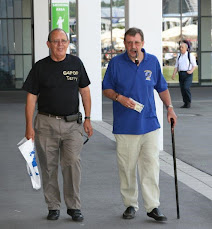Times they are-a Changing!During my first 30 plus years as a SWL followed by over 28 years as a licensed amateur I like to believe that I have changed and adjusted to the many new developments and challenges presented by this great hobby.
As an example, I no longer build my projects using an alloy chassis and valve bases nor do I keep a paper log having moved with the times to transistors, IC?s and computers etc. all of which are great improvements and enhance my enjoyment of this hobby.
However of late there are many changes that I find hard to accept particularly in the area of operating practices, for example:
I fail to understand why operators find it necessary to tune up on air. Have they not heard of analysers etc for monitoring the VSWR while matching to their aerial? and why not use a dummy load for tuning the PA or linear? Neither of these cause live transmissions and interference to other operators.
Some of the vocabulary (or lack of it) that is creeping into QSO's beggars? belief and some of it is bordering on gibberish e.g.:
“The personal is” - I understand this translates to “My name is”!
“The rig, personal or location would be....” - I wonder why it ‘would be’ is it an imaginary rig/name/QTH?
For as long as I can remember the order of call / hand over has been ‘Your call’ de ‘My call’ why now is it being changed to:
‘My call’ sending it right back to ‘You call’ or something similarly stupid? Whilst on this subject what is wrong with the long established ‘Over’?
These are just a few examples of what I, and I am sure many others, consider to be the current declining operating standards in our hobby.
Perhaps this decline is caused by most new amateur’s relatively short introduction to being a radio operator without the proper foundations? In the past these foundations were laid by a much longer association with the air waves and experienced radio operators before being allowed on the bands.
With due respect to Bob Dylan's original protest song I don't consider that operating practices are "a-changing" for the better. Perhaps experienced amateurs should correct these bad practices whenever they hear them on the air but one wonders what reaction this would solicit from the offending parties?
Terry - G4POP
The result of the general dumbing down of standards.
John - GI0HWO
















